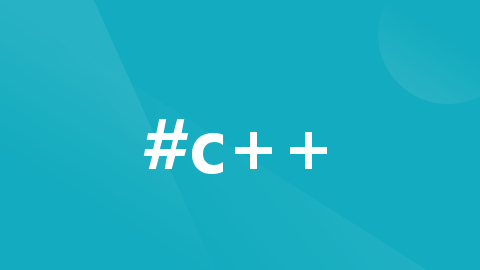如何用 CNN 玩转 AlphaGo 版的五子棋?
作者 | 李秋键责编 | 郭 芮出品 | CSDN(ID:CSDNnews)近几年来,AI在游戏方面的发展如火如荼,尤其是自从阿法狗AI围棋战胜围棋之后,更是引起了AI发展的狂潮,同...


作者 | 李秋键
责编 | 郭 芮
出品 | CSDN(ID:CSDNnews)
近几年来,AI在游戏方面的发展如火如荼,尤其是自从阿法狗AI围棋战胜围棋之后,更是引起了AI发展的狂潮,同时也引起了很多AI游戏的应用与深化发展。其实游戏中的AI有着非常悠久的历史,相当多的游戏都是围绕着对抗“敌人”展开,而这个“敌人”,就是AI,其中包含一些行为方式固定没有一丁点变化的低级AI,也有一些引入随机因素稍微高级一点的AI,不过这里的AI本质上是一段固定的程序脚本,如果玩家掌握到其中的规律,游戏性就会瞬间降低。

而深度学习的AI版本却是不同,他有着多层位的参数与多方向的选择,拓展了其中AI的智能性,让玩家找到其中的规律性变得基本不可能,这也是深度学习的重要意义之一。今天,我们就将利用CNN实现智能五子棋。

实验前的准备
首先我们使用的python版本是3.6.5。所测试的系统有windows10,windows7,Linux系统以及苹果系统。从这点也可以看出python多平台和多拓展性、易于迁移的优点。
所使用的的python库有tkinter,其目的是用来规划棋盘布局,实现下棋功能;SGFfile用来读取棋谱和加载训练模型;os库用来读取和存储本地文件;TensorFlow库用来建立CNN网络模型以及训练等事项。

棋盘的建立
1、初始化棋盘:
其中各参数设定意义如下:初始化:someoneWin:标识是否有人赢了;humanChessed:人类玩家是否下了;IsStart:是否开始游戏了;player:玩家是哪一方;playmethod:模式,和robot下棋,还是和ai下棋;bla_start_pos:黑棋开局时下在正中间的位置;bla_chessed:保存黑棋已经下过的棋子;whi_chessed:保存白棋已经下过的棋子;board:棋盘;window:窗口;var:用于标记选择玩家颜色的一个变量;var1:用于标记选择robot或者ai的一个变量;can:画布,用于绘出棋盘;net_board:棋盘的点信息;robot:机器人;sgf:处理棋谱;cnn:cnnc神经网络。
其中代码如下:
def __init__(self):
self.someoneWin = False
self.humanChessed = False
self.IsStart = False
self.player = 0
self.playmethod = 0
self.bla_start_pos = [235, 235]
self.whi_chessed = []
self.bla_chessed = []
self.board = self.init_board()
self.window = Tk()
self.var = IntVar()
self.var.set(0)
self.var1 = IntVar()
self.var1.set(0)
self.window.title("myGoBang")
self.window.geometry("600x470+80+80")
self.window.resizable(0, 0)
self.can = Canvas(self.window, bg="#EEE8AC", width=470, height=470)
self.draw_board()
self.can.grid(row=0, column=0)
self.net_board = self.get_net_board()
self.robot = Robot(self.board)
self.sgf = SGFflie()
self.cnn = myCNN()
self.cnn.restore_save()
def init_board(self):
"""初始化棋盘"""
list1 = [[-1]*15 for i in range(15)]
return list1
2、棋盘布局:
其主要功能就是画出棋盘和棋子。具体代码如下:
def draw_board(self):
"""画出棋盘"""
for row in range(15):
if row == 0 or row == 14:
self.can.create_line((25, 25 + row * 30), (445, 25 + row * 30), width=2)
else:
self.can.create_line((25, 25 + row * 30), (445, 25 + row * 30), width=1)
for col in range(15):
if col == 0 or col == 14:
self.can.create_line((25 + col * 30, 25), (25 + col * 30, 445), width=2)
else:
self.can.create_line((25 + col * 30, 25), (25 + col * 30, 445), width=1)
self.can.create_oval(112, 112, 118, 118, fill="black")
self.can.create_oval(352, 112, 358, 118, fill="black")
self.can.create_oval(112, 352, 118, 358, fill="black")
self.can.create_oval(232, 232, 238, 238, fill="black")
self.can.create_oval(352, 352, 358, 358, fill="black")
def draw_chessed(self):
"""在棋盘中画出已经下过的棋子"""
if len(self.whi_chessed) != 0:
for tmp in self.whi_chessed:
oval = pos_to_draw(*tmp[0:2])
self.can.create_oval(oval, fill="white")
if len(self.bla_chessed) != 0:
for tmp in self.bla_chessed:
oval = pos_to_draw(*tmp[0:2])
self.can.create_oval(oval, fill="black")
def draw_a_chess(self, x, y, player=None):
"""在棋盘中画一个棋子"""
_x, _y = pos_in_qiju(x, y)
oval = pos_to_draw(x, y)
if player == 0:
self.can.create_oval(oval, fill="black")
self.bla_chessed.append([x, y, 0])
self.board[_x][_y] = 1
elif player == 1:
self.can.create_oval(oval, fill="white")
self.whi_chessed.append([x, y, 1])
self.board[_x][_y] = 0
else:
print(AttributeError("请选择棋手"))
return
3、判断胜负条件:
根据是否是五子连在一线判断输赢。
def have_five(self, chessed):
"""检测是否存在连五了"""
if len(chessed) == 0:
return False
for row in range(15):
for col in range(15):
x = 25 + row * 30
y = 25 + col * 30
if self.check_chessed((x, y), chessed) == True and \
self.check_chessed((x, y + 30), chessed) == True and \
self.check_chessed((x, y + 60), chessed) == True and \
self.check_chessed((x, y + 90), chessed) == True and \
self.check_chessed((x, y + 120), chessed) == True:
return True
elif self.check_chessed((x, y), chessed) == True and \
self.check_chessed((x + 30, y), chessed) == True and \
self.check_chessed((x + 60, y), chessed) == True and \
self.check_chessed((x + 90, y), chessed) == True and \
self.check_chessed((x + 120, y), chessed) == True:
return True
elif self.check_chessed((x, y), chessed) == True and \
self.check_chessed((x + 30, y + 30), chessed) == True and \
self.check_chessed((x + 60, y + 60), chessed) == True and \
self.check_chessed((x + 90, y + 90), chessed) == True and \
self.check_chessed((x + 120, y + 120), chessed) == True:
return True
elif self.check_chessed((x, y), chessed) == True and \
self.check_chessed((x + 30, y - 30), chessed) == True and \
self.check_chessed((x + 60, y - 60), chessed) == True and \
self.check_chessed((x + 90, y - 90), chessed) == True and \
self.check_chessed((x + 120, y - 120), chessed) == True:
return True
else:
pass
return False
def check_win(self):
"""检测是否有人赢了"""
if self.have_five(self.whi_chessed) == True:
label = Label(self.window, text="White Win!", background='#FFF8DC', font=("宋体", 15, "bold"))
label.place(relx=0, rely=0, x=480, y=40)
return True
elif self.have_five(self.bla_chessed) == True:
label = Label(self.window, text="Black Win!", background='#FFF8DC', font=("宋体", 15, "bold"))
label.place(relx=0, rely=0, x=480, y=40)
return True
else:
return False
得到的UI界面如下:


深度学习建模
1、初始化神经网络:
其中第一层和第二层为卷积层,第四层为全连接层,接着紧接着连接池化和softmax。和一般的CNN网络基本无异。基本参数见代码,如下:
def __init__(self):
'''初始化神经网络'''
self.sess = tf.InteractiveSession()
# paras
self.W_conv1 = self.weight_varible([5, 5, 1, 32])
self.b_conv1 = self.bias_variable([32])
# conv layer-1
self.x = tf.placeholder(tf.float32, [None, 225])
self.y = tf.placeholder(tf.float32, [None, 225])
self.x_image = tf.reshape(self.x, [-1, 15, 15, 1])
self.h_conv1 = tf.nn.relu(self.conv2d(self.x_image, self.W_conv1) + self.b_conv1)
self.h_pool1 = self.max_pool_2x2(self.h_conv1)
# conv layer-2
self.W_conv2 = self.weight_varible([5, 5, 32, 64])
self.b_conv2 = self.bias_variable([64])
self.h_conv2 = tf.nn.relu(self.conv2d(self.h_pool1, self.W_conv2) + self.b_conv2)
self.h_pool2 = self.max_pool_2x2(self.h_conv2)
# full connection
self.W_fc1 = self.weight_varible([4 * 4 * 64, 1024])
self.b_fc1 = self.bias_variable([1024])
self.h_pool2_flat = tf.reshape(self.h_pool2, [-1, 4 * 4 * 64])
self.h_fc1 = tf.nn.relu(tf.matmul(self.h_pool2_flat, self.W_fc1) + self.b_fc1)
# dropout
self.keep_prob = tf.placeholder(tf.float32)
self.h_fc1_drop = tf.nn.dropout(self.h_fc1, self.keep_prob)
# output layer: softmax
self.W_fc2 = self.weight_varible([1024, 225])
self.b_fc2 = self.bias_variable([225])
self.y_conv = tf.nn.softmax(tf.matmul(self.h_fc1_drop, self.W_fc2) + self.b_fc2)
# model training
self.cross_entropy = -tf.reduce_sum(self.y * tf.log(self.y_conv))
self.train_step = tf.train.AdamOptimizer(1e-3).minimize(self.cross_entropy)
self.correct_prediction = tf.equal(tf.argmax(self.y_conv, 1), tf.argmax(self.y, 1))
self.accuracy = tf.reduce_mean(tf.cast(self.correct_prediction, tf.float32))
self.saver = tf.train.Saver()
init = tf.global_variables_initializer() # 不存在就初始化变量
self.sess.run(init)
def weight_varible(self, shape):
'''权重变量'''
initial = tf.truncated_normal(shape, stddev=0.1)
return tf.Variable(initial)
def bias_variable(self, shape):
'''偏置变量'''
initial = tf.constant(0.1, shape=shape)
return tf.Variable(initial)
def conv2d(self, x, W):
'''卷积核'''
return tf.nn.conv2d(x, W, strides=[1, 1, 1, 1], padding='SAME')
def max_pool_2x2(self, x):
'''池化核'''
return tf.nn.max_pool(x, ksize=[1, 2, 2, 1], strides=[1, 2, 2, 1], padding='SAME')
2、保存和读取模型:
def restore_save(self, method=1):
'''保存和读取模型'''
if method == 1:
self.saver.restore(self.sess, 'save\model.ckpt')
#print("已读取数据")
elif method == 0:
saver = tf.train.Saver(write_version=tf.train.SaverDef.V2)
saver.save(self.sess, 'save\model.ckpt')
#print('已保存')
3、建立预测函数和训练函数:
def predition(self, qiju):
'''预测函数'''
_qiju = self.createdataformqiju(qiju)
pre = self.sess.run(tf.argmax(self.y_conv, 1), feed_dict={self.x: _qiju, self.keep_prob: 1.0})
point = [0, 0]
l = pre[0]
for i in range(15):
if ((i + 1) * 15) > l:
point[0] = int(i*30 + 25)
point[1] = int((l - i * 15) * 30 + 25)
break
return point
def train(self, qiju):
'''训练函数'''
sgf = SGFflie()
_x, _y = sgf.createTraindataFromqipu(qiju)
for i in range(10):
self.sess.run(self.train_step, feed_dict={
self.x: _x,
self.y: _y
})
self.restore_save(method=0)
def train1(self, x, y):
'''另一个训练函数'''
for i in range(100):
self.sess.run(self.train_step, feed_dict={
self.x: x,
self.y: y,
self.keep_prob: 0.5
})
print('训练好了一次')
#self.restore_save(method=0)
4、生成数据:
def createdataformqiju(self, qiju):
'''生成数据'''
data = []
tmp = []
for row in qiju:
for point in row:
if point == -1:
tmp.append(0.0)
elif point == 0:
tmp.append(2.0)
elif point == 1:
tmp.append(1.0)
data.append(tmp)
return data
其中此处CNN在棋盘应用和图像识别的不同之处在于,图像识别加载的参数来自于图像本身的像素值作为训练的参数,而此处训练的参数则是自定义的棋盘棋谱参数,比如说棋盘左上角的位置参数等等各个位置参数都是预先设定好的,通过加载棋谱即可以让电脑知道此时黑白棋子在哪个位置。然后通过加载各个位置以及胜负情况进行判断,最终电脑加载模型即可预测可能胜利的下棋位置,达到智能下棋效果。
最终效果:

作者简介:李秋键,CSDN 博客专家,CSDN达人课作者。硕士在读于中国矿业大学,开发有安卓武侠游戏一部,VIP视频解析,文意转换写作机器人等项目,发表论文若干,多次高数竞赛获奖等等。
声明:本文为作者原创投稿,未经允许请勿转载。
【End】
《原力计划【第二季】- 学习力挑战》正式开始!
即日起至 3月21日,千万流量支持原创作者,更有专属【勋章】等你来挑战

推荐阅读
☞谁说国产编译器没救了?这个 C/C++ 和 JavaScript 编译器来了 | 程序人生 2020
☞中国开发者真实画像:Java长盛,偏爱Windows操作系统,鲜少参与开源项目
☞用于小型图形挖掘研究的瑞士军刀:空手道俱乐部的图表学习Python库
☞Libra新编程语言 :Move 的所有权模型灵感来源原来是它……

你点的每一个在看,我认真当成了喜欢
更多推荐
 已为社区贡献12373条内容
已为社区贡献12373条内容








所有评论(0)